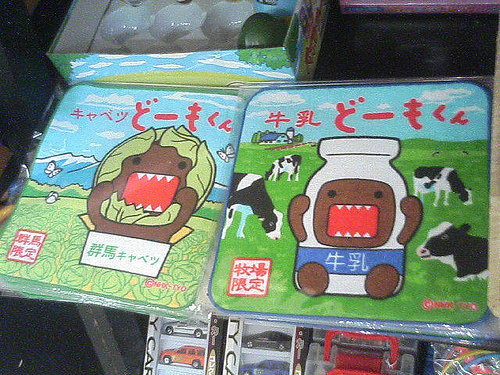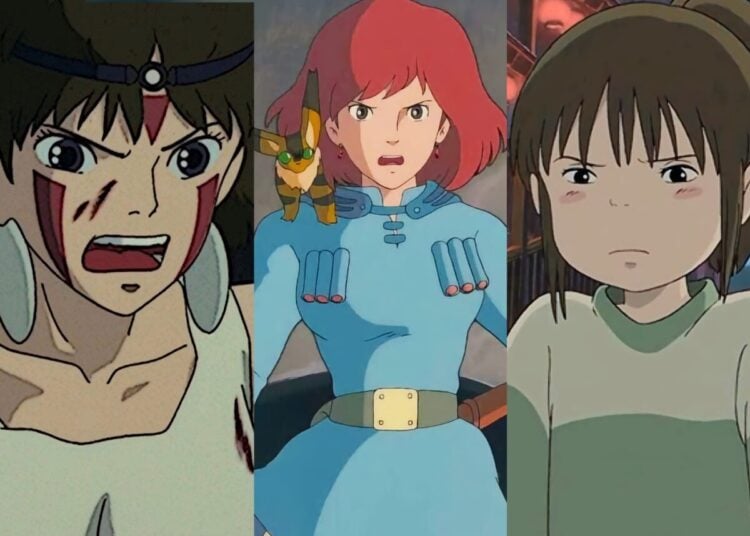This weekend we all got in the car and headed off to Karuizawa (“ka-roo-EE-za-wa”), our favorite mountain getaway, for a dip in the hot springs at the foot of volcanic Mt. Asama. Driving through the town, we stopped off at the Cowboy House restaurant, a hilariously overdone recreation of an Old West steakhouse complete with barbecue sauce, baked beans and even Coors beer. The cowboy atmosphere was so complete that a funny thing happened when we left: I momentarily forgot which side of the road I should be driving on. It seems my subconscious had somehow analyzed all the American stuff around me and decided to go into “America mode.” Fortunately I caught myself and got back on the right (left) side of the street.
Japanese is an “agglutinating” language, which basically means that it puts lots of information (past tense, passive voice, etc) inside the verb form, which is good because you don’t have a lot of helping verbs flying around (“he would have been able to help her if she’d told him”), but a little difficult because you have to memorize more verb forms. Most of the time learning the verbs is not a problem since they follow reliable patterns. For example, three verbs you learn early on are the formal verbs tabemasu (to eat), nomimasu (to drink) and ikimasu (to go), which act as both simple present and future tense (both “I go (every day)” and “I will go” in one verb conjugation). Change the masu to mashita and you have the formal past tense (“I went”) — very easy. Some other forms that exist are informal present tense (iku), also called dictionary form since this what you find in dictionaries; an informal past tense; a command form; and the useful “te” form which you can use to make requests (tabete kudasai, please eat) or join words together (take + come combine to form “bring”).
Another verb ending students of Japanese learn early is masho, which corresponds to “let’s…,” as in “let’s eat” (tabemasho), “let’s drink” (nomimasho), or “let’s go” (ikimasho), to use the above examples. This is more than just a handy suffix to allow you to say many things in Japanese — it’s actually a reflection of Japan’s unique group-centric culture. In a non-smoking area in the U.S., you’d probably see signs saying something like “do not smoke,” giving you no choice in the matter. In Japan, however, it’s common for such notices to use the gentler “masho” ending, effectively saying “let’s not smoke in non-smoking areas,” (tobacco o yamemasho), “let’s put our telephones into vibration mode” (manner mode ni shimasho) and so on. It seems to be part of the Japanese psyche that they respond better to an inclusive request rather than a specific command or rule. This “let’s request” form has a very soft sound to it, and parents and care-givers use it to make even the most stubborn child do what’s asked of them.
Remember that J-List is brimming with great 2006 calendars
right now, with more than 200 different anime, JPOP, swimsuit idol, nature photo, desktop, sports, and other items in stock. In addition to very popular calendars — Studio Ghibli, Howl’s Moving Castle, Mihiro, Reon Kadena — we also make it our mission to provide an amazing selection of other calendars that are only sold in Japan, from the esoteric to the bizarre to the just plain fun. Studying Japanese, or just like the aesthetic look of kanji? We’ve got several calendars that feature Japanese words and slogans, beautiful kanji proverbs, and more. Interested in Japanese contemporary art? We’ve got some great art calendars in stock this year. Love Japan’s attractive actresses or swimsuit models? We’ve got many to browse through. A word of warning though: Japan is a very seasonal place, and these great calendars are only available now. The best time to make your 2006 calendar order is now!
















